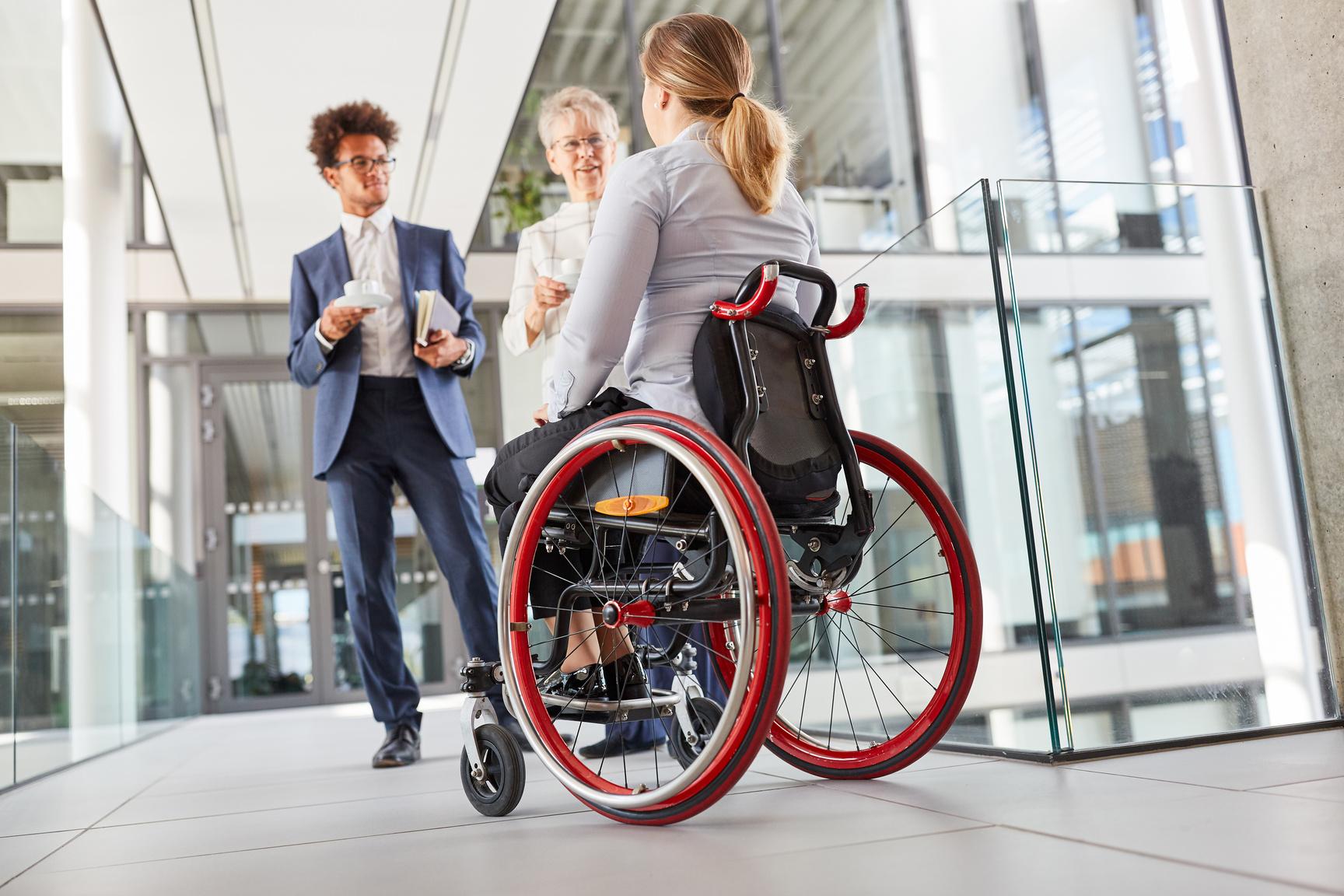DISABILTY CHECKLIST
103/53 Stanley Street, Bankstown NSW 2200

ABOUT US
Collappor8 is the leading value-based management consulting firm, delivering measurable outcomes and tangible value to our clients. What sets us apart? Our unwavering focus on results and our deep commitment to culture, diversity, and inclusion.
We believe that diverse perspectives fuel innovation and drive better business outcomes. That's why we celebrate the unique contributions of every individual, creating an environment where creativity thrives.

Our approach is customised to address your specific challenges and opportunities. We actively seek diverse viewpoints, ensuring our recommendations are not only effective but also inclusive, catering to diverse needs.
Collappor8 collaborates with like-minded businesses to champion diversity and inclusion.
Together, we drive positive social impact, forging a more equitable and socially responsible future.
Choose Collappor8 as your partner for results-driven consulting with a cultural edge.
Together, we'll create lasting change for your organisation and society.
INTRODUCTION
An inclusive business strives to ensure that people of all abilities are welcome and treated with equity and dignity. It is not only ethically sound but also beneficial for business success, and can open untapped potentials.
Inclusive practices benefit people with disabilities, as well as individuals with prams, temporary injuries, or older individuals. This includes-

people with physical disabilities
mental health conditions
mobility aids users
vision or hearing impairments
perceptual or cognitive disabilities carers, individuals with prams, and those with learning difficulties or frailty.
By prioritising inclusivity, businesses create a more equitable and accessible society, where everyone can participate fully and enjoy equal opportunities.
LEGAL OBLIGATIONS
All businesses operating in Australia are legally obligated to comply with the provisions of the Disability Discrimination Act 1992 (the Act).
The Act explicitly prohibits discrimination against individuals based on their disability status in providing goods, services, or facilities.
The Act encompasses several areas where discrimination against people with disabilities is prohibited, including:
Businesses must ensure equal opportunities for individuals with disabilities in all aspects of employment.
Educational institutions must provide reasonable adjustments for students with disabilities to ensure equal access to education.
Businesses offering public facilities must ensure accessibility through physical modifications and accommodations.
Businesses must provide equal access to goods, services, and facilities without discriminatory barriers.
Discrimination against individuals with disabilities in land transactions is prohibited.
Equal access and opportunities must be provided for individuals with disabilities in sports, club activities and memberships
Businesses have a legal obligation to ensure that all public aspects of their facilities and services are accessible to everyone unless it causes unjustifiable hardship.
Before claiming unjustifiable hardship, businesses should consider potential adjustments, costs, available assistance, the benefits for the individual, and engage in direct discussions and consultations.
Common workplace adjustments may include flexible working hours, physical modifications to premises, and redistributing minor duties that are not inherent to job requirements.

EMPLOYEE COMMUNICATION AND CUSTOMER SERVICE CHECKLIST
As you read each question, simply tick "yes", "No" OR "n/a" if not applicable
01
Do you provide accessible formats for printed information, such as readable text or large print? 02
Is your website designed to meet web content accessibility guidelines? 03
Have you implemented a video relay service or other accessible communication methods to accommodate deaf and hard of hearing customers and employees? 04
Do you follow up with customers after their interactions to ensure their needs were met and to address any concerns related to accessibility? 05
Is disability awareness included in the induction or training program for your staff? 06
Are your staff knowledgeable and confident in using inclusive language when communicating with people of different disabilities? 08
Do you have a policy for promptly resolving any technical issues that may affect communication with deaf customers through relay services or other accessible channels? 07
Have you implemented multiple channels for customers to contact you, such as email, live chat phone, and face-to-face interactions?
Do your written materials, including menus and signs, use fonts that are large, easy to read, and inclusive for individuals with diverse reading abilities 10
09
Are videos used in your marketing efforts captioned for accessibility?
11
Do your staff understand and adhere to a policy that prohibits discriminatory attitudes within the business? 12
Do you use visual alerts, such as flashing lights or visual displays, to notify deaf or hard of hearing employees of important announcements or emergencies in the workplace? 13
Are feedback mechanisms in place to gather input from people with disabilities, their families, carers, and relevant organisations? 14
Do your staff understand the policies and accommodations for assistance animals? 15
Is there a designated quiet area available for individuals who may require a separate, calm space? 16
Are loud noises, such as background music, kept at an appropriate volume to minimise potential discomfort for customers with sensory sensitivities? 17
Are staff trained to handle customer interactions involving discriminatory attitudes, ensuring they respond appropriately and respectfully? 18
Do you provide opportunities for staff to consult with relevant sources for advice on disabilityrelated matters?
As you read each question, simply tick "yes", "No" OR "n/a" if not applicable. 19
Are staff encouraged to engage in continuous learning and development to enhance their knowledge of disability inclusion and customer service? 20
Have you established clear guidelines and expectations for staff regarding the provision of inclusive and accessible services to customers with disabilities?

PHYSICAL ACCESSIBILITY CHECKLIST
As you read each question, simply tick "yes", "No" OR "n/a" if not applicable
01
Is there a designated accessible parking bay available nearby, ensuring proximity to the building entry? 02
Is the ground surface of the accessible parking bay firm, level, and well-maintained? 03
Is the accessible parking bay adequately lit for visibility and safety? 04
Does a clearly marked pathway lead directly from the accessible parking bay to the building entrance? 05
Is the pathway from the parking bay to the entrance free from obstacles, such as parked vehicles, bollards, litter bins, and overhanging vegetation? 06
Is the area around the building clear of goods, rubbish, and equipment, ensuring unobstructed access? 07
Does the pathway have a minimum width of 1,000mm and a minimum overhead clearance of 2,000mm? 08
Is the pathway stable, firm, and even underfoot, without excessive cross-fall or unevenness?
Is there a level or step-free entry available, providing easy access to the premises? 10
09
Is the door clearly distinguishable from the facade, ensuring clear visibility?
PHYSICAL ACCESSIBILITY CHECKLIST
Are there wide, easy-to-open, or automatic doors to facilitate smooth entry? 12
13
Are glass doorways and side panels easily visible, with solid contrast strips for better visibility? 14
Is at least part of the reception counter at a wheelchair-accessible height, clutter-free, and accompanied by a seat? 15
Is there a hearing induction loop or other amplifying device installed in the area? 16
Are display stands, pamphlet racks, bookstalls, etc., positioned visibly and within reach for people with disabilities? 17
Do floor surfaces, such as low-pile carpet or slipresistant flooring, facilitate ease of movement for wheelchair users? 18
As you read each question, simply tick "yes", "No" OR "n/a" if not applicable. 19
Do floor surfaces minimise light reflection and sound reverberation to create a comfortable environment?
Are the door handles, taps and light switches, placed at an accessible height?
Are the building's pathways designed to allow wheelchair users to move independently without assistance? 20
Are junctions between floor surfaces arranged to avoid tripping hazards and visual confusion?
PHYSICAL ACCESSIBILITY CHECKLIST
21
Are aisles or corridors wide enough to accommodate the passage of two individuals using mobility aids? 22
Are corridors and passageways free from obstructions and hazards that may hinder wheelchair users or individuals with impaired vision? 23
Is there ample clear space between furniture to maneuver mobility aids? 24
Is there comprehensive signage, including symbols, that guides people throughout the building and clearly indicates relevant locations? 25
Is the lighting throughout the building even and glare-free? 26
Is the signage clear, easy to read, and visible from both sitting and standing eye levels? 27
In meeting rooms, do the spaces provide adequate leg clearance for wheelchair users? 28
Is there an elevator available for accessing different levels of the building?
As you read each question, simply tick "yes", "No" OR "n/a" if not applicable. 29
Are there accessible restrooms available with features such as grab bars, accessible sinks, and adequate maneuvering space for wheelchair users? 30
Are there emergency evacuation procedures in place that consider the needs and safety of individuals with disabilities?

CREATING AN INCLUSIVE WORKPLACE
Creating inclusive employment opportunities for people with disabilities not only promotes social equity but provides numerous benefits for businesses. By tapping into a wider talent pool, fostering a diverse workforce, and implementing reasonable adjustments, organisations can enhance their brand reputation, increase employee loyalty, and drive sustainable success.
General Process for Employing People with Disabilities-
Approach the recruitment process with an open mind, focusing on skills, qualifications, and potential rather than preconceived notions about disability.
Inquire about any support or accommodations needed during the recruitment process, ensuring equal opportunities for participation.
Ensure the application process, including forms and materials, is accessible to candidates with disabilities.
Allow sufficient time for candidates to respond to questions, considering any additional time needed due to disabilities.
Collaborate with the employee to identify reasonable adjustments that address the effects of their disability in the workplace.
Think creatively and flexibly to find solutions that meet the individual's needs and align with the core requirements of the job.
Consult resources and success stories from others who have implemented effective adjustments.
Regularly communicate with the employee to evaluate the success of the adjustments and make any necessary modifications.
Create a supportive work environment where the employee feels comfortable discussing their needs and where ongoing adjustments are considered necessary.
EMPLOYING PEOPLE WITH DISABILITIES CHECKLIST
As you read each question, simply tick "yes", "No" OR "n/a" if
01
Is there a written policy or commitment to actively recruit and employ people with disabilities? 02
Is there a system for providing reasonable accommodations to employees with disabilities? 03
Are job postings and recruitment materials accessible and inclusive for people with disabilities? 04
Does your business provide disability awareness training for all employees to foster an inclusive work environment? 05
Are there processes in place to assess and evaluate the skills and abilities of candidates with disabilities on an equal basis with other applicants? 06
Have you considered offering flexible work arrangements or job-sharing opportunities to accommodate the needs of employees with disabilities? 07
Are workplace facilities and amenities designed to be accessible and usable for individuals with disabilities? 08
Does your business actively promote a culture of diversity and inclusion within the organisation
09
Do you seek feedback from employees with disabilities to identify areas for improvement and address any barriers they may face? 10
Have you established partnerships with disability organisations or networks to enhance your recruitment efforts and tap into a broader talent pool?

DISABILITY EMPLOYMENT SUPPORT
The Australian Government has several initiatives in place to encourage the inclusion of people with disabilities in the workforce and provide the necessary support to employers such as-
The JobAccess serves as the national hub for disability employment. It offers information on various aspects of employing people with disabilities, including financial support, tools, resources, and recruitment and retention strategies. You can find more information at their website www.jobaccess.gov.au or by calling 1800 464 800.
The Employment Assistance Fund provides financial assistance to individuals with disabilities for work-related modifications, equipment, and services. This support aims to enhance their independence and productivity at work. It is available to both new and existing employees with disabilities. Visit www.jobaccess.gov.au or call 1800 464 800 for more information.
The Wage Subsidy Scheme offers eligible employers up to $1,500 (excluding GST) as an incentive to hire individuals with disabilities. To qualify for the subsidy, employers must employ the person for a minimum of eight hours per week for 13 weeks, with the goal of achieving sustainable employment. For further details, visit www.employment.gov.au or call 1800 464 800.
The Disabled Australian Apprentice Wage Support is provided to employers who hire Australian Apprentices meeting the disability eligibility criteria. It also applies if an Australian Apprentice acquires a disability during their apprenticeship or traineeship. Additional information can be found at www.australianapprenticeships.gov.au or by calling 13 38 73.
The Supported Wage System is a workplace relations mechanism that allows employers to pay a productivity-based wage to eligible individuals whose work productivity is reduced due to disability. For more details, you can visit www.employment.gov.au or call 1800 464 800.
Collappor8 is committed to assisting businesses by creating a comprehensive disability checklist.

This checklist will serve as a valuable resource, providing guidance and support to ensure businesses are inclusive and accessible for people with disabilities
Our dedication to disability inclusion aims to foster an environment of equal opportunities and promote diversity in the business community.
